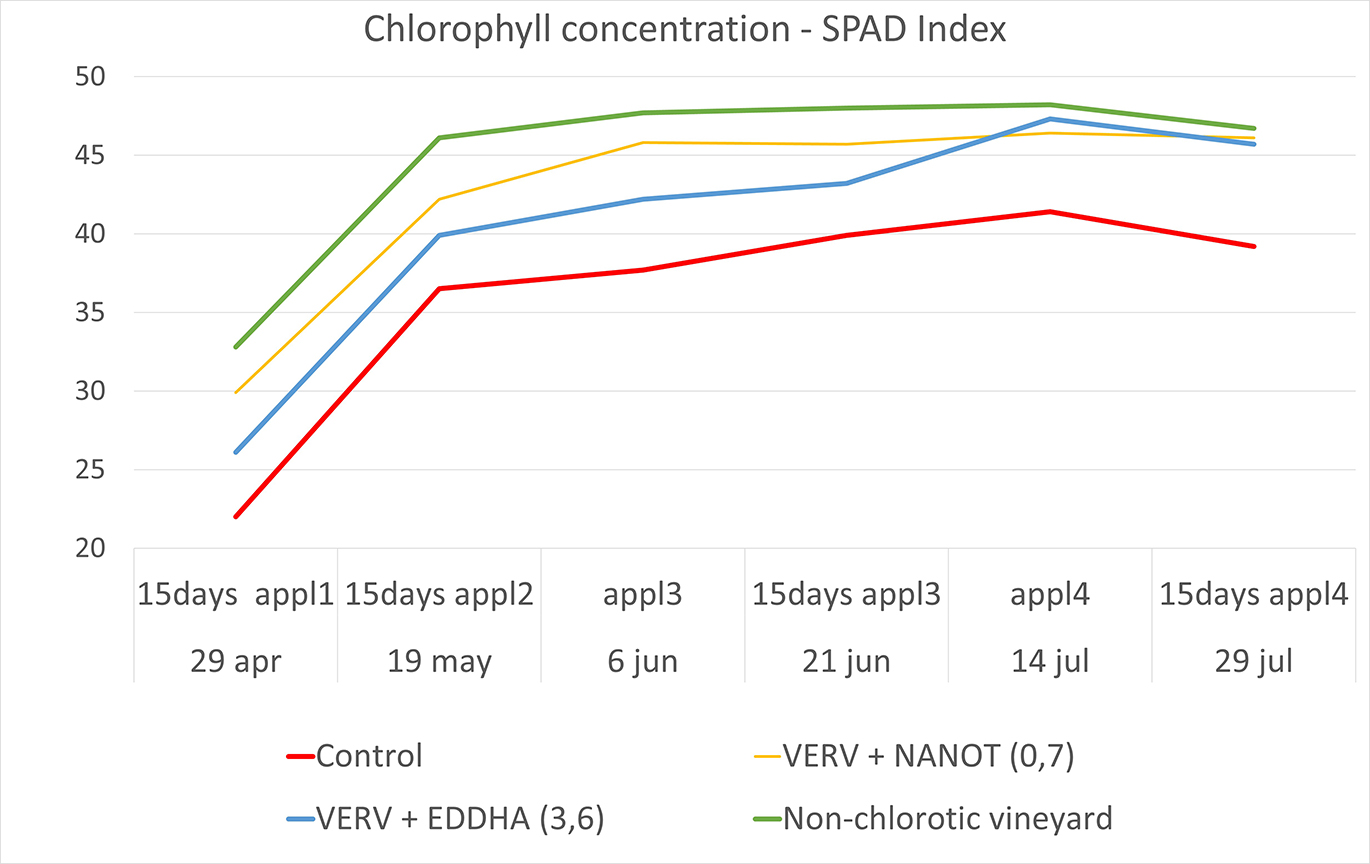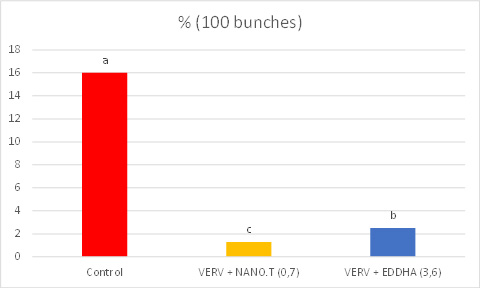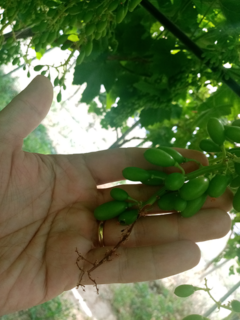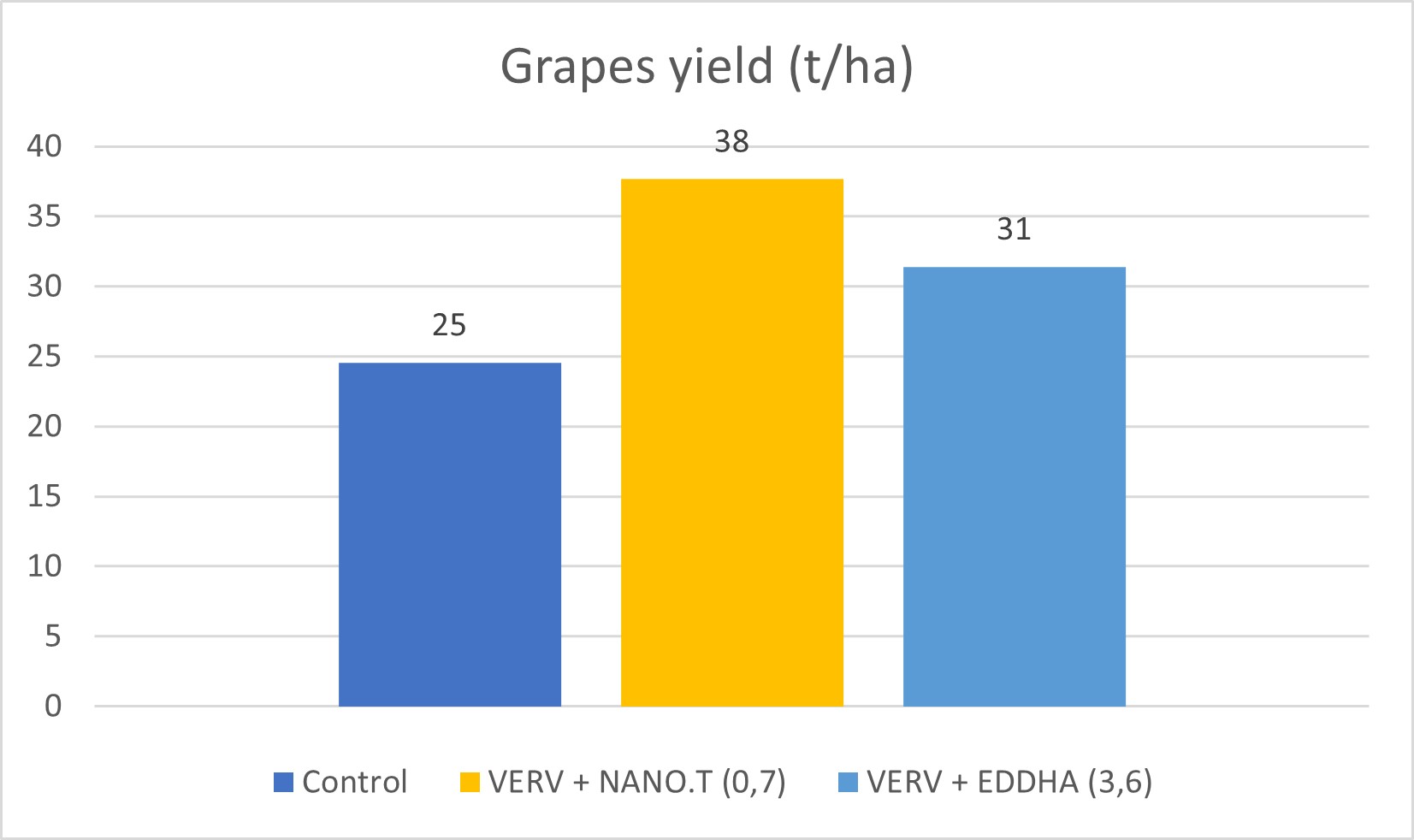Tests for the control of ferric chlorosis in table grape
Trial conducted in Trani (BAT) Variety: Regal – Soil: silty-clayey

Trend of chlorophyll concentration
End of April – mid July
In the graph it is possible to observe the trend of the chlorophyll concentration (SPAD index) of 4 tests (the first three with evident iron chlorosis):
- test 1: control without any iron intake
- test 2: application of Nano.T Fe (total iron: 0,7 kg/ha) + Verv as co-formulant
- test 3: application of an EDDHA chelated fertilizer (total iron: 3,6 kg/ha) + Verv as co-formulant
- test 4: vineyard without chlorosis
((15 days appl1 means that the SPAD monitoring was performed 15 days after the first application)
The test treated with Nano.T Fe demonstrated from the first application a higher vigor than the chelated one.
The optimal supply of iron right from the budding helps the plant in the following stages, favoring:
- bunch elongation
- berries swelling
It is also important to note that in the test with EDDHA a total of 3.6 kg/ha of iron was added (in 4 applications) while the test treated with Nano.T Fe uses only 20% of iron (0,7 kg/ha) safeguarding environmental sustainability.
Test comparison
mid July
Evidence of dissection of the rachis found on 16% of the bunches on the control. The percentage in treated tests was instead much lower.
From the graph it is however possible to observe that the test treated with Nano.T Fe stands at 1.3% which is significantly lower compared to the 2.5% of the test with EDDHA (p=0,05 cluster: a, b, c).
Final remarks
- The test treated with Nano.T Fe obtained significantly higher results compared to the control with about 38 t/ha of grape weight (against 25 t/ha). The thesis with EDDHA instead stood at 31 t/ha.
- The relief on the coloring of the bunches shows that the treated tests have a greenish color compared to the control.
- From the survey on the Brix degree it is evident that the treated tests have a higher sugar content than the control.
- Regarding the hardness of the berries, no substantial differences between the tests were highlighted.
- The tests conducted did not highlight any symptoms of phytotoxicity on the treated plants.






